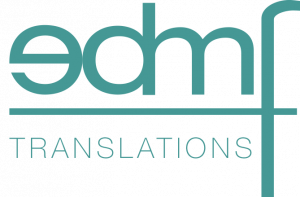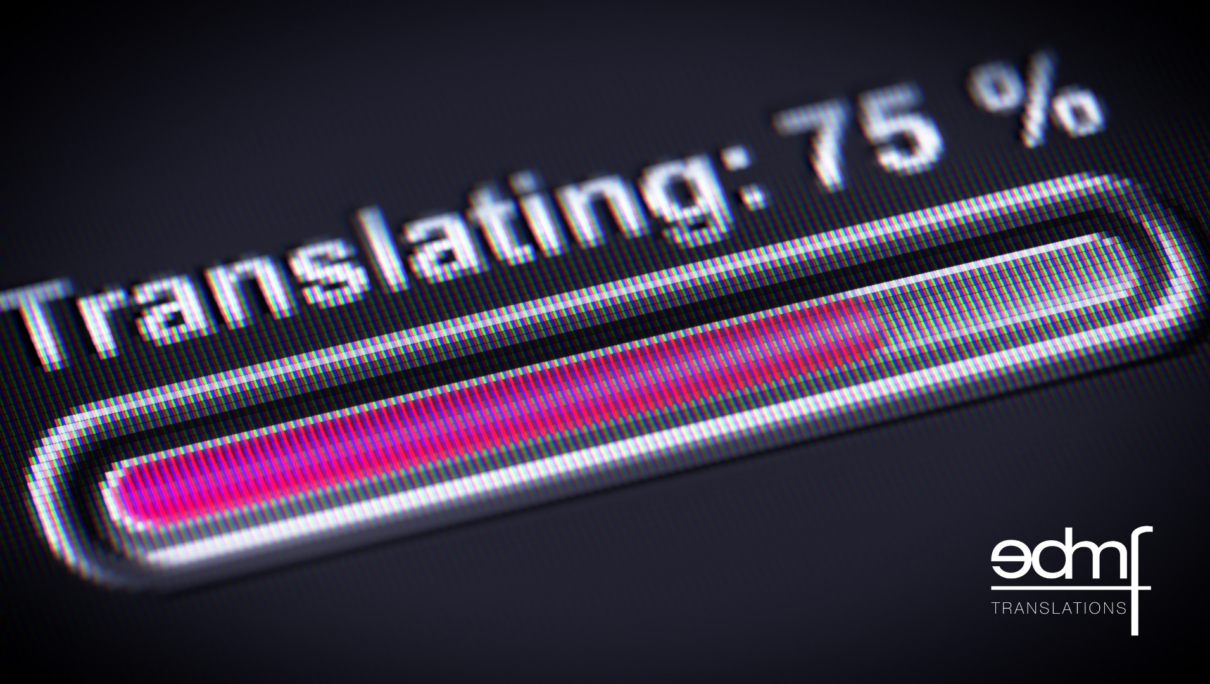Machine Translation – A blessing or a curse for the translation industry?
Technology is everywhere. It’s difficult to find a part of our everyday lives that isn’t affected by it, and just when we get used to a particular app or process, something else comes along and turns things upside down again.
Technological progress is generally very positive, we like it when our lives become easier, or we can complete jobs more quickly, as a result.
The translation business is no different. We are coming across MT (machine translation) increasingly in our day-to-day work, quite inevitable with the advances in technology. Can it help the translation business? Yes it can. Is it a panacea, can we stop hiring translators? No chance.
What we are seeing at EDMF with MT is that it throws up a whole new series of problems that human translators need to tackle. Professional translators, by and large, are consistent creatures. When you conduct your research and decide on the translation of a technical term, you stick with it throughout the text, whether it is a 2-page analysis or a 100-page report.
MT pays no attention to consistency with vocabulary from one sentence to the next. A document can be a “report” in one sentence, a “review” in the next, and an “account” on the following page. All perfectly acceptable translations depending on the context, but very confusing to the reader of the translated text.
Also, MT doesn’t follow client terminology. Clients can have specific terms within their company, and sometimes within particular corporate divisions, that have to be applied. MT ignores these requests completely.
Interestingly though, the greatest problem and therefore risk with MT is when it almost does the job right, just not well enough, when it almost captures the original meaning of a sentence perfectly. At first glance, the translated sentence looks fine, but drilling down to the detail and the nuances you realise the operative word here is “almost”.
To an untrained eye, the text looks accurate and ready, but these are the errors that a professional linguist is trained to pick up on. Even more problematic is that some companies are deciding to rely solely on MT and forgo the use of human translation, “because it seems good enough and it’s cheaper”, so there is a real risk of such errors creating significant misunderstandings. Not to mention the problems that can arise if MT is used for business contracts or complex legal translations for example (yes, believe it or not, some firms are already doing this…), and the MT misses the crux of the sentence, thereby misleading the reader or user of the text, with unforeseeable consequences.
We cannot stick our heads in the sand, technology is here to stay, and we need to integrate it into our processes. However, nothing at the minute can substitute for human intelligence and the skills of a trained and qualified translator. Don’t hesitate to contact us at EDMF if you’d prefer not to run the risk with your company’s reputation!
Written by Douglas Arnott


